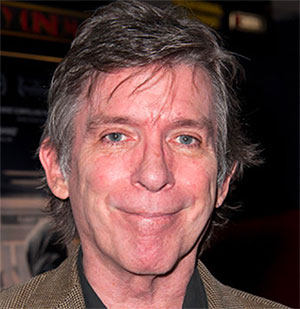'The Phoenician Scheme' review: Wes Anderson and Co. embark on an elaborate save-a-soul mission
Published in Entertainment News
A peculiar tension exists inside nearly every frame created by writer-director Wes Anderson. The geometric visual preoccupation of the framing; the actors, sometimes in motion but more frequently motionless; the manifestation of storytelling as a series of the prettiest shoebox dioramas in modern cinema: It’s more than a style or a look to Anderson. It’s his way of seeing the world through a lens of comic stoicism, right at the edge of art-installation territory.
The tension in those images comes from two places. The unfortunate place: When the comic banter or monologuing strains for laughs, or goes sideways, it sometimes dies an extra, tiny, momentary death because of the arch, extreme formality of the presentation.
The more fortunate source of tension is where the actors live. In Anderson’s lavishly talented ensembles, the majority of the performers fulfill the basic requirements of being in a Wes Anderson movie, which can involve spitting out long reams of dialogue quickly, directly, without a lot of sauce. It also involves the task of portraying a human in a specific realm of unreality and in a kind of permanent repose, even in motion.
But hitting the marks and holding the pose isn’t enough. There’s movement, of course, in every Anderson comedy, and in the best ones, the movement and the sight gags are funnier because of the stillness surrounding that movement. Whatever you want to call Anderson’s universe — I’ll go with Deadpandia — it’s not easy to activate as a performer. When the right actor wriggles free of the constraints and finds a rhythm, a heartbeat and a human spark, it’s magic.
Benicio del Toro is the star of “The Phoenician Scheme,” Anderson’s 12th and latest. But the ringer is Michael Cera, as Norwegian tutor Bjørn Lund, employed as an all-purpose factotum by the shady, swaggering, death-defying entrepreneur played by Del Toro.
In one go, Cera joins the top tier of Anderson alums, which includes Ralph Fiennes (“The Grand Budapest Hotel,” “The Wonderful Story of Henry Sugar”) and, from Anderson’s earlier, looser years, Gene Hackman and Anjelica Huston (“The Royal Tenenbaums”) and, of course, Bill Murray in everything (he has a brief cameo here, as God). Cera is terrifically subtle in everything he does, from pricelessly cheap dialect humor to sudden bursts of jealousy. He’s delightful, even if “The Phoenician Scheme” is only occasionally that.
The movie’s largely about other characters. A frequent target of assassins, forever surviving plane crashes in between business deals, Anatole “Zsa-zsa” Korda (Del Toro) embarks on the riskiest development project of his life, indicated by Anderson’s title. It consists of a dam, tunnels, a canal and a general colonialist ravaging of a desert region (fictional, but with plenty of real-world Middle Eastern inspirations). Funding this beast means negotiating with several investors, among them a French nightclub owner (Mathieu Amalric), a pair of American industrialists (Tom Hanks, Bryan Cranston) and, above all, Korda’s estranged daughter, Liesl, a cynical novitiate and Korda’s intended heiress, played by Mia Threapleton.
“The Phoenician Scheme” is a tale of what money can buy, and what money can’t. Stringing episodes together, screenwriter Anderson (working from a story co-created by Roman Coppola) treats Korda as a cocky survivor of fabulous riches. Through his adventures in fundraising, and realization that he won’t last forever, Korda learns from Liesl a little about what makes a legacy important. Meantime, he negotiates family matters with his 10 young sons and his scowling brother, Uncle Nubar (Benedict Cumberbatch), who may be Liesl’s father, and whose massive woodcut of a beard comes straight from Orson Welles’ billionaire in “Mr. Arkadin.”
The overall vibe of fishy exoticism owes something to “Mr. Arkadin” as well. Anderson works here with a cinematographer new to him, the excellent Bruno Delbonnel, shooting on 35mm film. Anderson regulars Adam Stockhausen (production design, first-rate) and Milena Canonero (costume design, brilliant and vibrant as always) evoke a dreamlike 1950s setting in every soundstage-bound detail.
And the story? Well, it has a little problem with over-elaboration. “The Phoenician Scheme” follows a relatively straightforward narrative line, ticking off chapters as Korda addresses each of his prized (and literal) shoeboxes of research and minutiae regarding the massively disruptive, slave labor-dependent construction project. It’s easier to parse what’s going on here compared to the hyperlinking and layering of “The French Dispatch” and “Asteroid City.” But the protagonist is a bit of a bore. And somehow, right now, on planet Earth in 2025, a movie about a craven oligarch on a spree hits a mixed chord, let’s say.
It is, however, striking to see what happens in the epilogue of this up-and-down Anderson film, when Del Toro — who looks splendid but struggles to locate a lightness of touch the material could use — finally gets a few moments of on-screen relaxation in the epilogue. That’s by design: He is not the same person at the end of his story. But I wonder if Anderson erred in maintaining such a tight hold on Del Toro and Threapleton en route to the story destination.
A beautiful mixed bag, let’s say, all told. But I’ll see “The Phoenician Scheme” a second time sometime for Cera, who will surely return to the Anderson fold.
———
'THE PHOENICIAN SCHEME'
2.5 stars (out of 4)
MPA rating: PG-13 (for violent content, bloody images, some sexual material, nude images, and smoking throughout)
Running time: 1:45
How to watch: Now in theaters
———
©2025 Chicago Tribune. Visit chicagotribune.com. Distributed by Tribune Content Agency, LLC.













Comments